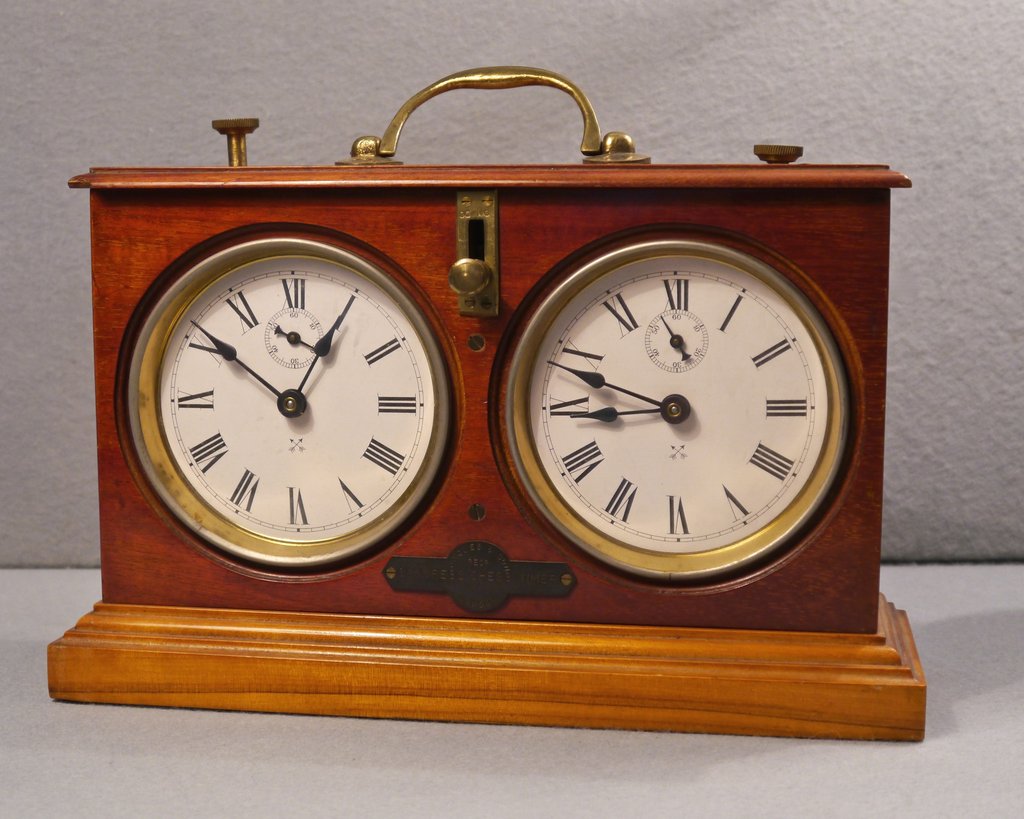Chess Clocks
Chess clocks, an essential component of competitive chess, offer a unique blend of functionality and aesthetics. They are designed to track the time each player spends on their moves, ensuring a fair and challenging game environment. The history of chess clocks dates back to the late 19th century, with their adoption becoming a standard in tournaments by the 1950s to address excessively long games. Today, chess clocks have evolved from simple mechanical devices to sophisticated digital gadgets, catering to a range of preferences and budgets.
History and Significance
The first known use of chess clocks was in an 1883 tournament in London, featuring dual timekeeping mechanisms to regulate each player's thinking time. This innovation marked a pivotal moment in chess history, introducing a new dynamic to the game by adding pressure and a strategic element related to time management. Over the decades, chess clocks have become a staple in competitive play, with significant advancements in technology enhancing their accuracy and reliability.

Materials and Designs
Wooden Chess Clocks
Crafted from light and dark wood, these chess clocks combine traditional aesthetics with functionality. They are prized for their craftsmanship and the natural beauty of the wood, making them a preferred choice for players who appreciate classic designs.
Plastic Chess Clocks
Available in a variety of colours including cream, clear, blue, black, and amber, plastic chess clocks offer durability and affordability. They are lightweight, making them easily portable for tournaments and casual play.
Digital Chess Clocks
Featuring models such as the DGT 2010 Professional, DGT 3000 Game Timer, DGT 10104 EASY PLUS, and DGT 10168 EASY, digital chess clocks provide precision and versatility. With functionalities including multiple time controls and settings for different game types, they cater to both professional and recreational players.
Brands and Styles
DGT
DGT stands at the forefront of digital chess clock technology, offering a range of models that cater to various levels of play. From the professional-grade DGT 2010 to the user-friendly DGT EASY series, DGT clocks are known for their reliability and advanced features.
Turnier
Turnier chess clocks, available in both wooden and plastic materials, are recognized for their sturdy construction and timeless designs. They embody the traditional spirit of chess while providing the essential functionality required for competitive play.
Quartz Tournament Chess Clock
The Quartz Tournament Chess Clock offers simplicity and efficiency, with a clear display and easy-to-use settings. It is an affordable option for those seeking reliability without the need for advanced features.
Aesthetic Value and Cultural References
Chess clocks not only serve a practical purpose but also add to the aesthetic appeal of the chess setup. Their design and material can complement the style of the chess pieces and board, creating a cohesive and attractive ensemble. The involvement of chess clocks in popular culture, notably in the acclaimed TV show "The Queen's Gambit," has further highlighted their aesthetic value and significance in the game of chess. This exposure has introduced a wider audience to the beauty and intricacy of chess clocks, enhancing their appeal as both functional devices and decorative objects.
Conclusion
Whether you're a professional player, a casual enthusiast, or a collector, our range of chess clocks offers something for everyone. From the timeless elegance of wooden clocks to the cutting-edge features of digital models, each piece combines form and function to enhance your chess experience. Explore our selection to find the perfect chess clock that matches your style and needs, and elevate your game with this essential chess accessory.


















